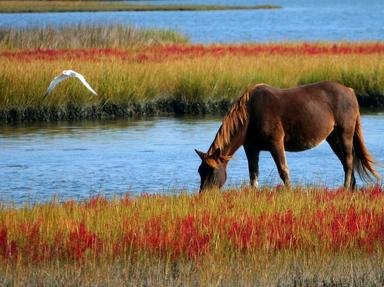Quiz Answer Key and Fun Facts
1. The coat has different sizes of freckles scattered over its entire body
2. The whole coat is of a light brown colour
3. There is a black line that stretches from the mane to the strunt (tail stump) on a coat that is light brown in colour
4. This coat colour is bay, chestnut, or black but is strongly intermingled with white hair
5. The colors around its eyes, lower abdomen, and legs are lighter or whiter than that of the entire coat
6. The colour of the coat is entirely black
7. The coat will be chestnut or brown but the mane and the lower legs are black
8. The basic coat colour is bay or black with white patches
9. Similar to one above, a mixture of bay, chestnut, and black with less white hair
10. A cream coloured coat
Source: Author
pollucci19
This quiz was reviewed by FunTrivia editor
rossian before going online.
Any errors found in FunTrivia content are routinely corrected through our feedback system.
